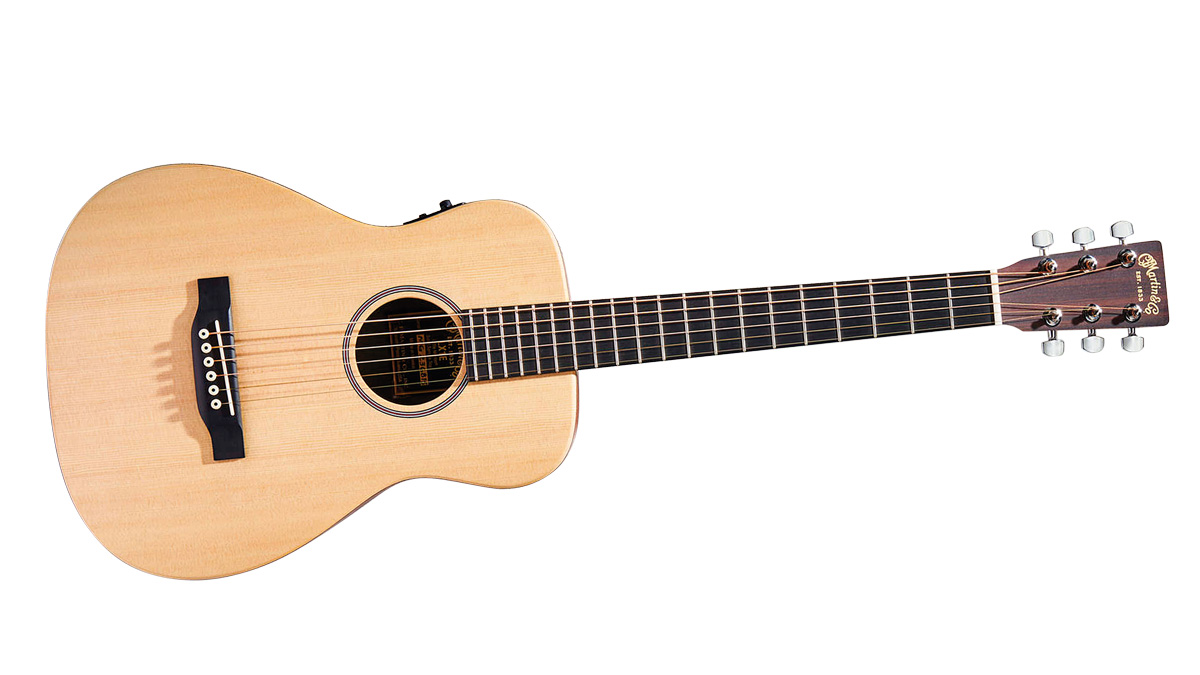MusicRadar Verdict
The Martin LX1E feels a bit utilitarian but packs a very endearing and classic steel-string punch, both acoustically and amplified.
Pros
- +
Business class by design – simple, but everything you need.
Cons
- -
Some may find it a bit austere, but it functions perfectly.
MusicRadar's got your back
A hugely tidy build, the LX1E is again unbound and the top's chamfered edge creates a rather thick-looking impression that looks a little unfinished against the Taylor Mini-E.
Conversely, the multi-piece neck feels more finished and less open-pored and the fret work and rounded fingerboard edges give a great feel.
The material may be man-made, but the fingerboard and bridge look like dense ebony, while the dark-hued HPL back and sides ape a dark, rich mahogany with the back's central core material giving a dark binding line, which evokes a classy feel.
This one has a conventionally braced back and - with less decoration, no position markers to the fingerboard face and just a single five-band rosette - does look a little austere.
The Little Martin does feel a little industrial, but from the first strum its more conventional spruce-top voice has us captivated. If you're a classic Martin fan, this is just miniaturised with a lovely crisp-edged voice.
Its conventional sound perhaps leads us to traditional 'American' fingerstyle, and its pushy voice would certainly be heard above bigger guitars, both in an ensemble or a recording. Serious fun.
Our Martin has only pre-set EQ, and without that engaged things are a little middly and boxy: it definitely sounds more conventional with the contour switch, which cleans up the mids a little and adds some crispness.
Want all the hottest music and gear news, reviews, deals, features and more, direct to your inbox? Sign up here.
Like its acoustic voice, the Martin sounds very 'conventional' plugged in and that's no bad thing. It does sound a little more 'piezo-y' than the Taylor, especially on higher position lead lines, but it's really easy to dial in: we scooped a little lower midrange and that was about it. Open-mic ready, we'd say!
- Explore more of the best Martin guitars
- Today's best 3/4 acoustic guitars
- Our pick of the best guitars for beginners
- More of the best cheap acoustic guitars under $/£500
Dave Burrluck is one of the world’s most experienced guitar journalists, who started writing back in the '80s for International Musician and Recording World, co-founded The Guitar Magazine and has been the Gear Reviews Editor of Guitarist magazine for the past two decades. Along the way, Dave has been the sole author of The PRS Guitar Book and The Player's Guide to Guitar Maintenance as well as contributing to numerous other books on the electric guitar. Dave is an active gigging and recording musician and still finds time to make, repair and mod guitars, not least for Guitarist’s The Mod Squad.

